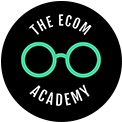5 Winning Unique Value Proposition Examples (With How To)
Written by Chintan Zalani, Content Marketing Specialist at The Ecom Academy
Your unique value proposition (UVP) is the reason your customers will choose you over other brands. It’s the game-changing entity that determines whether a new prospect will stay on your website to read about your offerings, or if they will press the back button.
If you’ve taken a DTC route, then your UVP is even more significant as it will earn you long-term customers.
The problem with most businesses is they use buzzwords, jargon, and slogans that don’t convey anything about their brand. See, the attention span of a consumer is short, and they don’t care about you. If you don’t show the usefulness of your brand within 5 seconds (on your home page and all major entry points of your site), then you’re dead meat.
Today, I’ll help you fix your UVP with five examples of brands doing it right. They all make a compelling first impression by uniquely describing how they solve the problems of their customers. Later, we’ll discuss the steps to create a UVP for yourself.
5 Awesome Unique Value Proposition Examples Of Brands Doing It Right
Here are a few promising examples of brands with a great promise of their value.
1. Beltology
Belts are supposed to be an accessory to hold your pants up, right? The founders of Beltology, however, wanted to convert into a premium experience. Their homepage title pitches that it’s “no longer the forgotten accessory.”

On their homepage, their promises are presented straightforwardly. The first promise is “be noticed” with CTA prompts to shop for men and women.
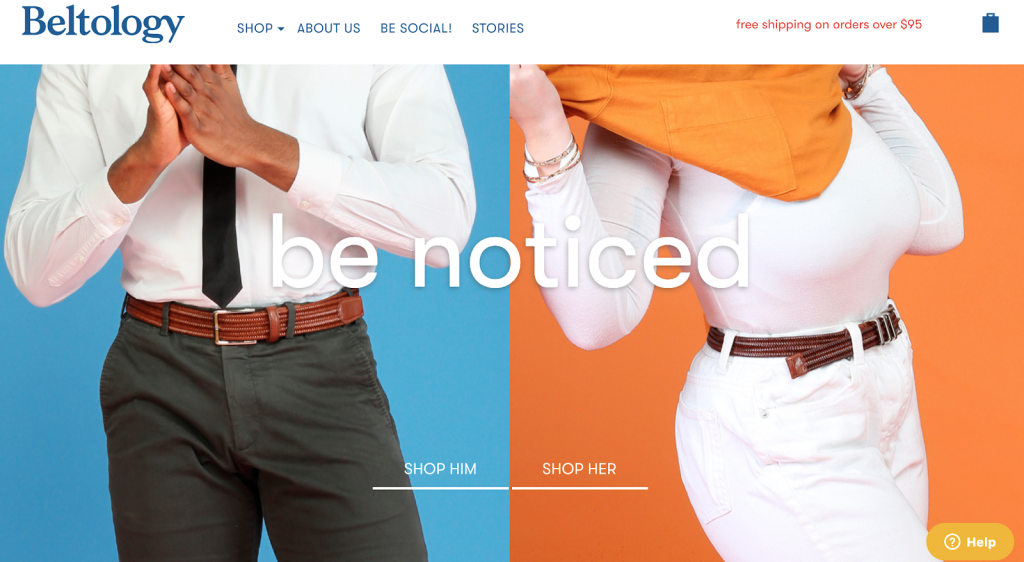
The next promise is – “be colorful.”
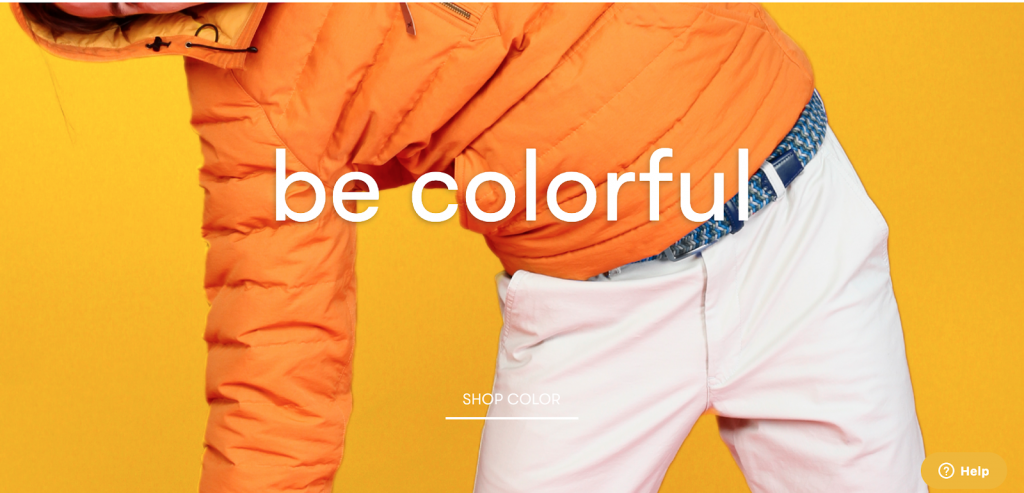
And the final one is “be collectible.”
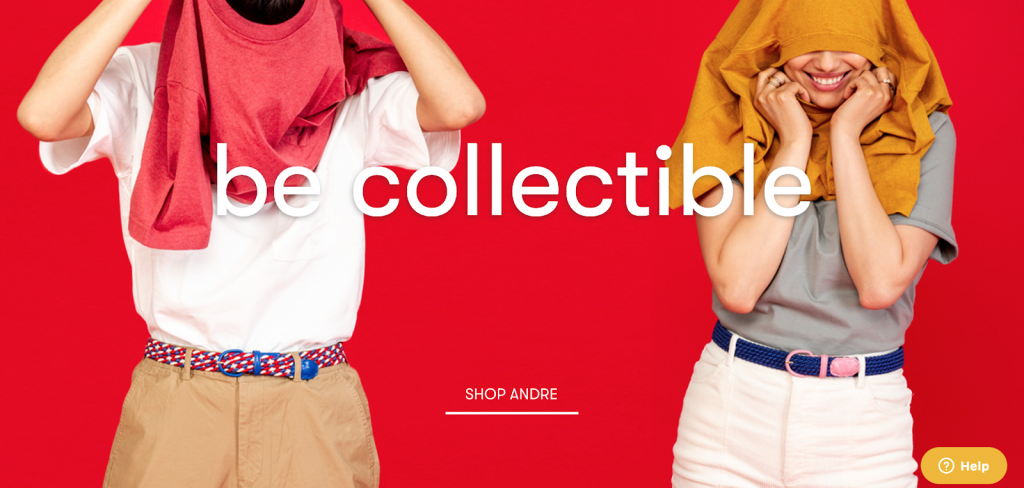
Within seconds, I have seen their products in action with the value they offer. If I’m interested in considering the belts by the brand, then I can click the CTA to shop.
Beltology presents its uniqueness elegantly and crisply. Their about page further expands saying that belts are the ‘single most important accessory in your wardrobe.’
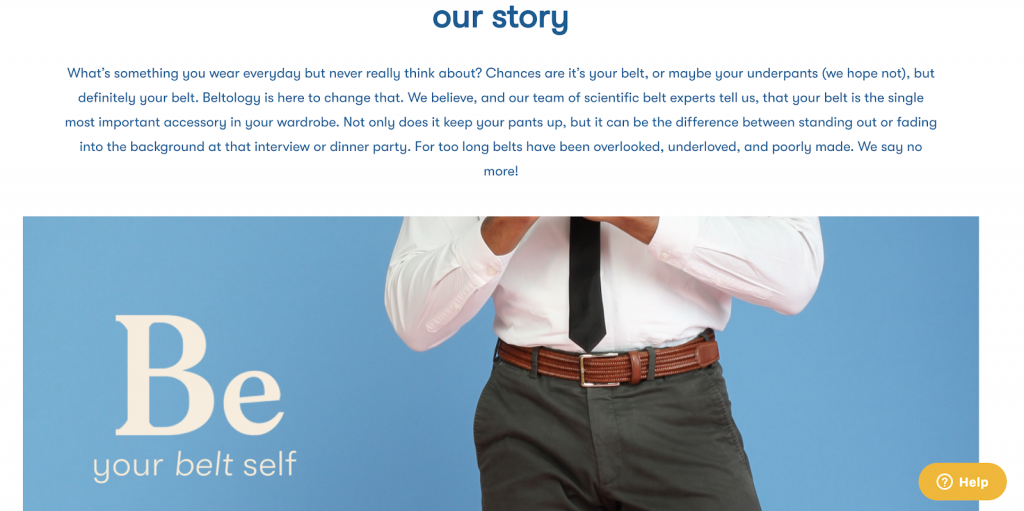
If you scroll below, they list the top 3 reasons reiterating the unique benefits of the belts handcrafted by their brand again.

Overall, Beltology does a great job of showing the unique benefits of their belts.
2. Bombas
Next up, we’ve Bombas. Their search blurb grabs the attention immediately with the pitch – “most comfortable socks in the history of feet.”
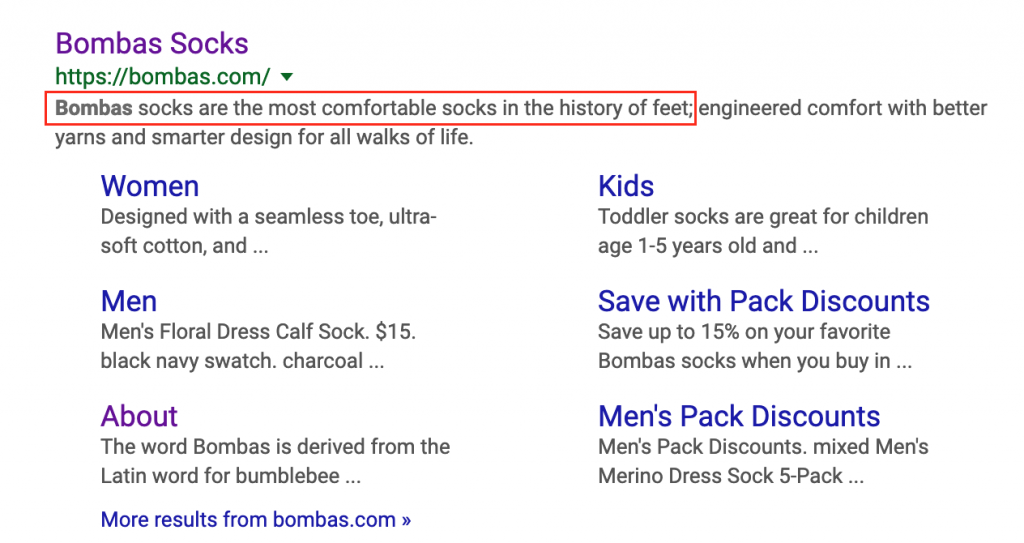
On their homepage, they detail they use Merino Wool for crafting their socks. It’s the “softest, coziest, warmest wool in the world.” It’s a persuasive and bold claim that persuades a prospect. And it’s followed with relevant CTA to shop for both women and men.

You’ll notice that they use boosters for their UVP in the form of “20% Off” on the first order and “1 Pair Purchases // 1 Pair Donated” (highlighted above).
When you scroll, they detail the number of donated pairs. And how socks are the most requested item at homeless shelters. If I’m an altruistic consumer that likes to contribute to the greater good, then I’ve all the more reasons to buy from them.

Further down, you’ll find that they also offer a happiness guarantee. It’s a unique pitch that shows that the brand cares about their customers.

I also love their sock tech page. It details how they experimented to come up with a ‘honeycomb structure’ and seven material improvements that provide comfort and performance.
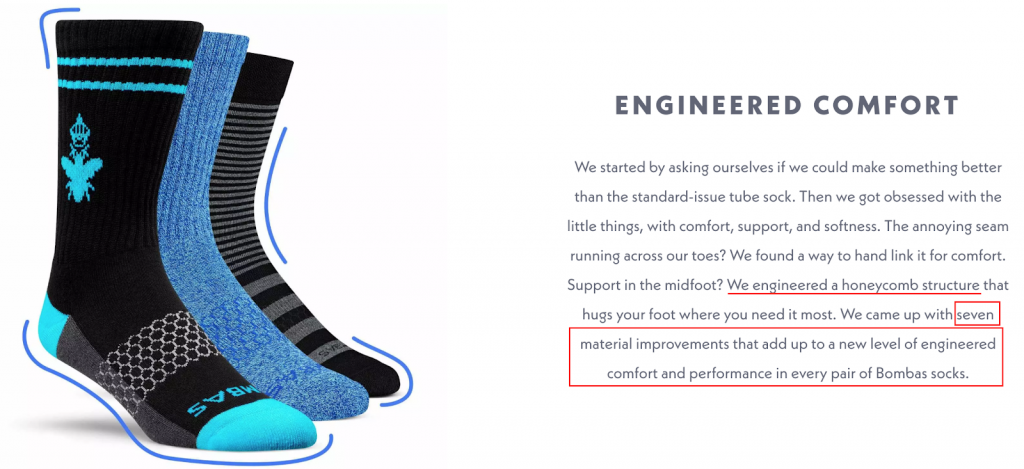
I have already started feeling differently about socks now.
3. David Kind
What happens when you meet an assertion like “Focus On Quality” front and center on a site’s homepage? Well, you know that quality is vital for the company.
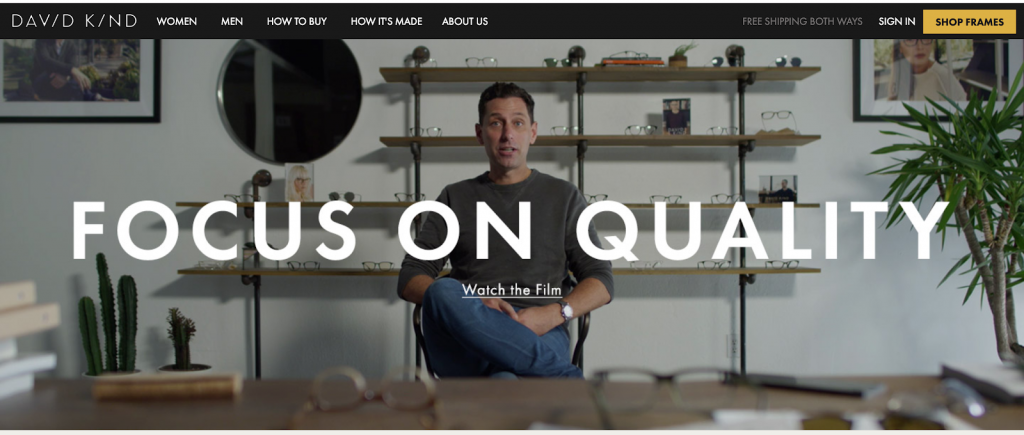
When done right, videos display your personality and make for a great introduction to a first-time visitor. David Kind has David Barton (creative director and founder) talk about his journey and their process of making quality glasses in a 6 minute and 33 seconds movie.
Although it might seem like a LOT of time, the video is welcoming and immediately grabs attention as David starts with: “I think quality is not most necessarily the most important quality for a lot of brands.”
Going back to their homepage:
The unique offering of their service is presented to the visitor on the first scroll:
“Receive 6 frames to try on at home for 6 days.”

It’s a compelling pitch because you get to choose three frames and you get the support of an optician to pick three more frames for you.
David Kind shows how to get your UVP right at two levels: by communicating what matters to your company and the unique benefits associated with your service.
4. Sprezzabox
Subscription box products generally have tangible benefits that you can display prominently on your site. Sprezzabox does the same by showing that their $28/month box delivers guaranteed over $100 in value.
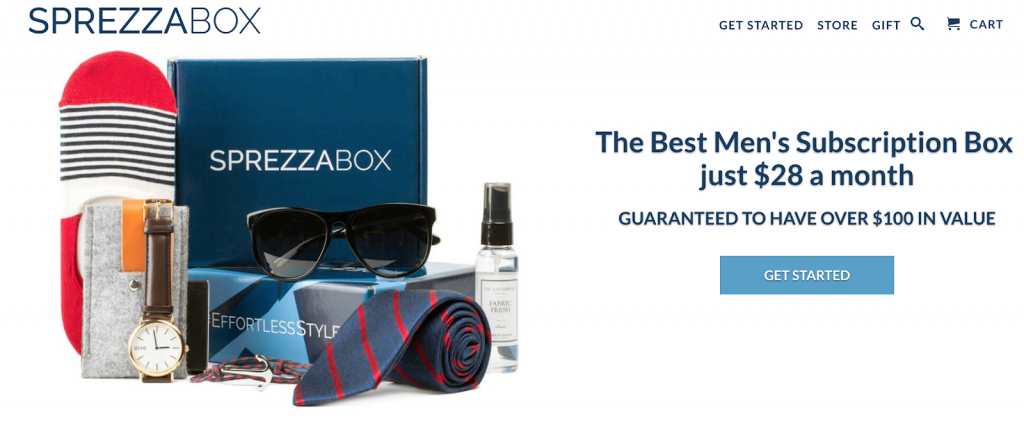
After invoking curiosity, the brand details their 3-step process by choosing a plan and then, creating a personalized package of 5-6 different products.

As such subscription boxes aren’t a ‘usual’ buy for consumers, the brand also has a section that lists a few of their past boxes with specifications of the products it contained.
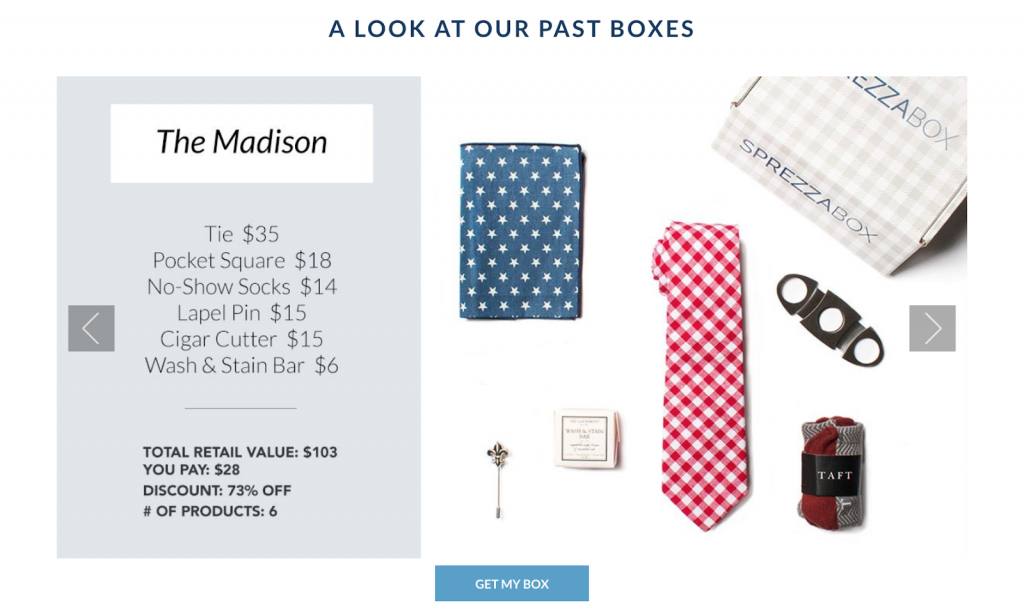
5. 6 Dollar Shirts
The company is in a unique position as its brand name itself spells out the benefit for their prospects. If you want to buy cheap shirts, then 6 Dollar Shirts offers you a tee at $6. Even their meta description lists the same benefits of getting “funny”, “cool”, and “soft vintage” tees at six dollars.
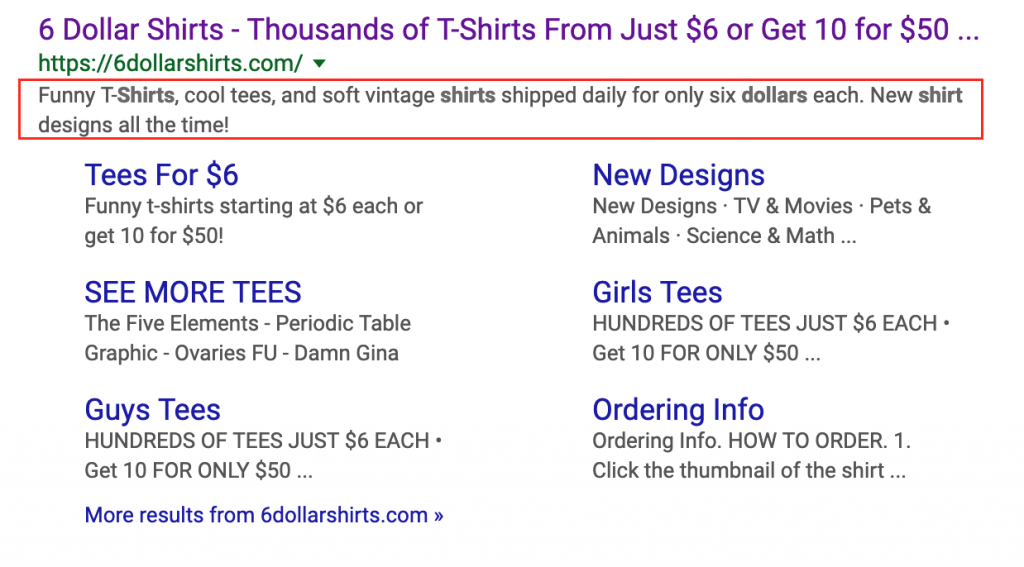
When you log in to their homepage, then you’re presented with a special offer: “Get 10 Tees For $50.” Those are two promises that get registered in my mind.

If the promises sound compelling to me, then I can choose from 1,500+ designs that are spread across various categories that I can conveniently explore. 
Note that there are tees for $9 and $12 (which doesn’t reflect their UVP), but they are ‘limited releases’ and ‘premium line’ respectively.
What can the brand do better?
- Work on their user experience (like getting rid of sliders).
- The cost of their tees doesn’t include the shipping charges and import duty.
How Do You Write A Value Proposition For Your Ecommerce Brand: 3 Simple Steps
The consumer decision-making process involves a comparison between different products before purchase. To stand out in this research and consideration phase, you need a compelling statement that communicates your unique value. Going by the above examples, here are the three simple steps you can follow to create a winning UVP.
Step #1: Identify your unique value
Marketing Experiments found that “identifying an effective value proposition” is the biggest challenge that most companies face. If you’re on the same boat, then begin with listing all the dimensions of values that your competitors offer. Now, your offerings need to excel in merely one element of value in your optimum customer’s mind.
The unique offering might need a lot of introspection and discussions with your team. You will also need a customer-first mindset during the identification. If it’s unique for the sake of it (for example: “our coffee beans are white in color.”), then you defeat the purpose of the UVP.
If you’re struggling to identify a unique aspect, then better create one. There are majorly four types of benefits that customers care about – so begin there. Here’s a worksheet by Marketing Experiments to execute the identification process.
Step #2: Contemplate on the different levels and types of value proposition you need
Wait.
Isn’t the UVP supposed to be ‘one’ by definition?
Yep.
However, you might need a different UVP for your homepage, product pages, and category pages because each one can serve a different purpose.
If you’re a huge Ecommerce brand like Amazon, then it makes sense to show the staggering number of products you ship on your homepage.

However, that doesn’t take away the need for having a value proposition for your category pages.
In the image below, you can see the search engine blurbs for the search term “shoes for men.” Amazon has a unique value proposition for the page highlighting its variety of shoes from ‘best brands.’ And they are ‘eligible for free shipping and returns.’
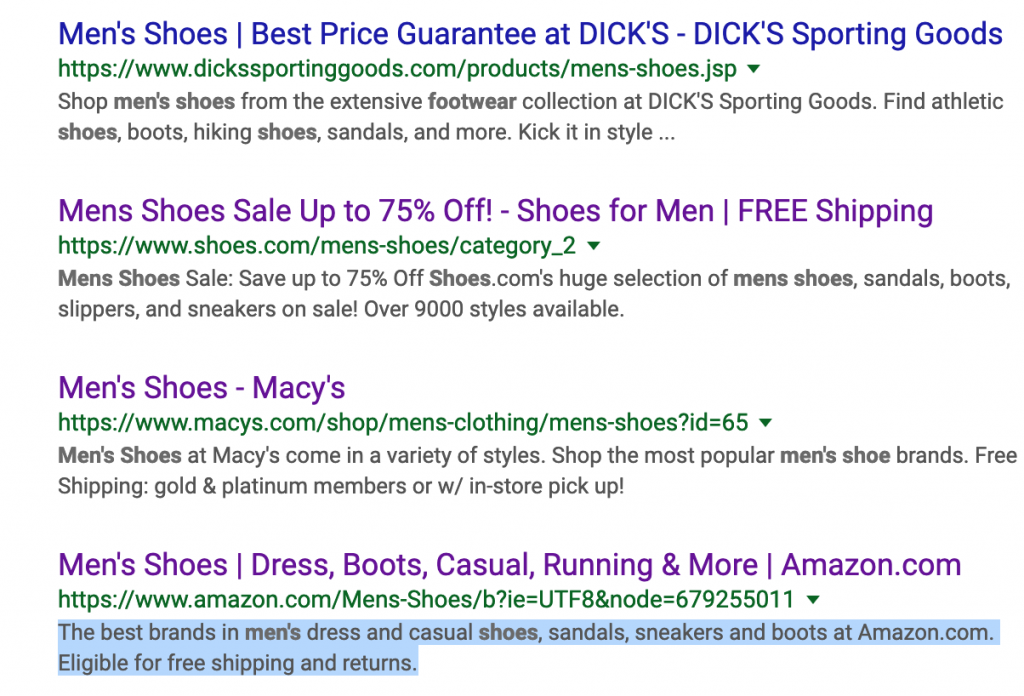
For me, the Shoes.com value proposition is the most concrete as it has associated numbers (75% Off and 9000 styles) that promise benefits to a prospect.
If I land on their category page, it maintains scent by showing me a “roundup of the season’s most essential shoe styles.” I can shop conveniently from their collection of shoes at the click of a button.
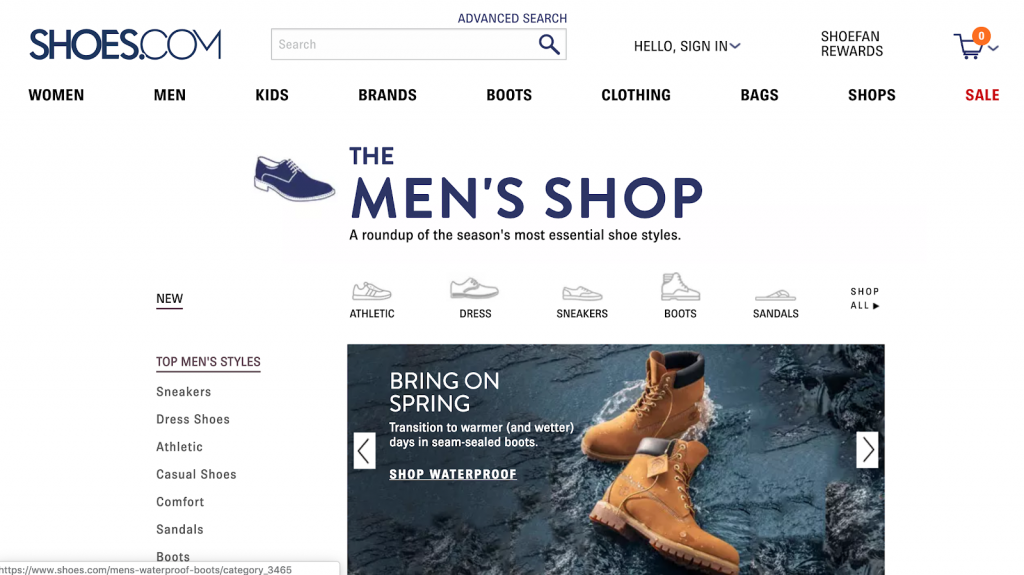
Your product page needs to tell why your customer must choose to buy that specific product.
For example, look at the Therapedic® 300-Thread-Count Cotton Mattress Pad product listing screenshot below at on the Bed Bath & Beyond website. The details list a lot of benefits of buying the mattress pad starting with ‘ensure a restful night’s sleep.’ It also claims to ‘keep you cool in the summer and warm in the winter.’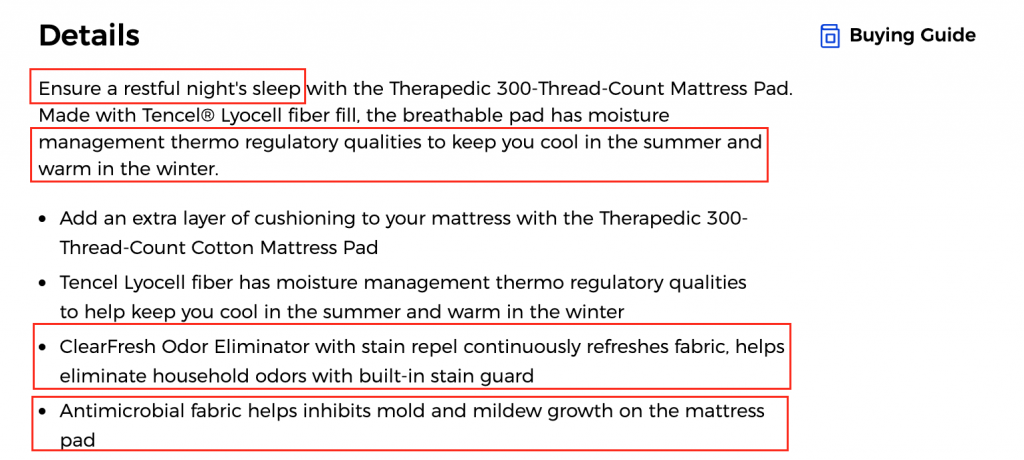
Lastly, you have a UVP for your company that sets how you view your brand internally and externally. They are called as the brand ethos. It is the primary value proposition that might make sense for use on your home page. As discussed in our how to start a brand article, Saddleback leather, lists it front and center on their homepage.

However, you can have a different UVP for your company and your homepage (think Amazon).
For your Ecommerce store, you should ideally incorporate all these types of value proposition to persuade your prospects at each step of their journey. And about all of your products. Here’s a value proposition spectrum with specific questions that you can use to brainstorm at different levels of your marketing efforts.
Step #3: Communicate your value proposition
Even if you list the 1754 unique features of your product/your brand, your visitors might not care. You need to articulate what these features will do for your prospects.
Marketing Experiments found that not being able to clearly express your value proposition is the second major challenge for marketers. To come up with that ONE 10 to 15-word sentence that can communicate your value, it’s a good idea to start with about 15 variations. Then, you can run it through a service like the Five Second Test to find how your prospects register a first-impression.
As per Peep Laja, ConversionXL founder, your value proposition is the number one aspect you should test. It won’t be a bad idea to conduct A/B tests to find out the most effective value proposition.
Now It’s Your Turn to Use These Value Proposition Examples
Your prospects will come to your store with the thought of “what’s in it for me?” and “why buy from this brand?” Your UVP should answer these questions clearly to ensure they stick around to read more about your products.
In this article, I have shown you five unique value proposition examples. Then, we looked at the three simple steps to create a winning UVP.
Which is your favorite brand value proposition? And do you have other tips for writing a compelling one? Let me know in the comments below.
Companies our team has worked with:










